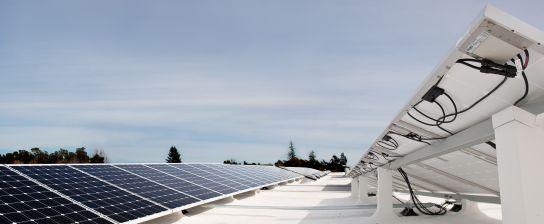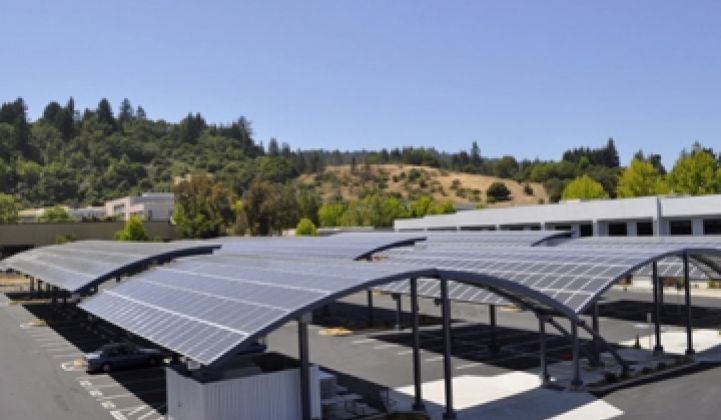A few months ago, I wrote an article that discussed how the big U.S. residential solar installers, solar leasing, and residential PPA companies were not entirely comfortable with the new breed of distributed electronics, be they microinverters or DC-to-DC approaches. Utility applications were not within reach of these technologies, either.
In fact, the hundreds of thousands of units shipped by Enphase, SolarEdge, or Tigo have mostly gone through smaller installers in the long tail.
That is now officially starting to change.
I just spoke with Jeff Krisa, the VP of Sales and Marketing at Tigo Energy, and his take is: "This technology is really breaking through."
Unlike microinverters which, so far, have only proved their value in residential and small commercial applications, Tigo's distributed MPPT solution is being deployed in larger size installations. The pictured installation is a 608-kilowatt combined rooftop and parking lot job using Tigo's energy maximizers on a deployment that covers 220 parking spaces at the Plantronics headquarters in Santa Cruz. Santa Cruz-based Swenson Solar performed the installation.
On the residential side, REC has deployed Tigo's distributed solution to over 1,000 residences, most owned by SunRun, according to Krisa. He adds that Tigo is working on a 1,200-home project In the U.K.
Although one of the main advantages to Tigo's distributed Maximum Power Point Tracking solution is improved energy harvest in shaded conditions, Krisa asserts that the Tigo solution is being used in non-shaded conditions, as well. He said, "Installers see it as a differentiator -- they can brand the monitoring screen."
Getting back to the larger installations, Krisa said that about 10 percent of their business is in deployments greater than 30 kilowatts, while they have 75 systems greater than 100 kilowatts, including a 650-kilowatt installation at the offices of Clif Bar. In Krisa's words, "Small commercial has definitely broken through."
He added that Tigo has both a 1-megawatt and a 3-megawatt job in the works.
Krisa claims that the current cost structure of microinverters "doesn't take them beyond 10 or 20 kilowatts." I've asked Enphase for a response to that claim, but have yet to hear back from them.
Krisa also forecasts that by 2012, the incremental cost of adding distributed MPPT from Tigo to a system will be 5 to 10 cents per watt.
He adds that rather than trying to justify the use of these products to an installer or a bank, "Soon you'll have to justify to the bank, why not?"




